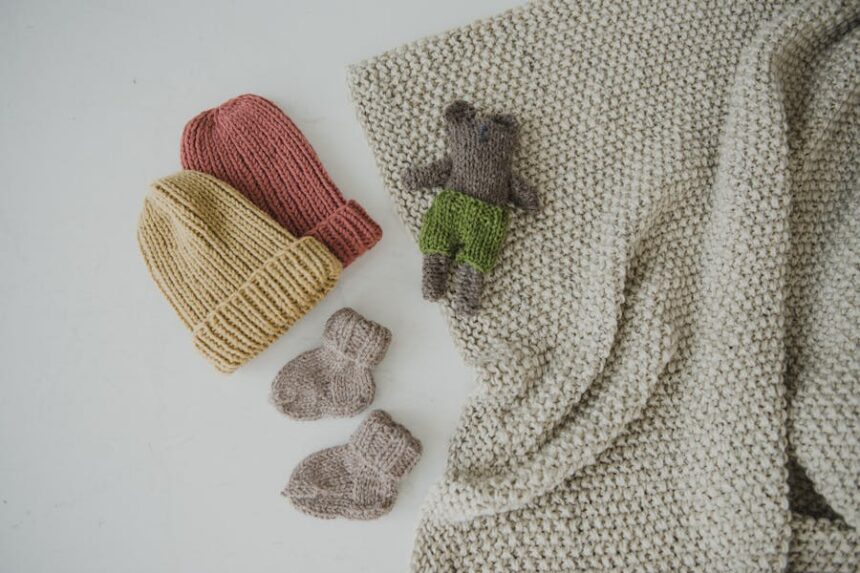In recent years, there’s been a noticeable shift in how parents shop for baby clothes. While mass-produced garments still dominate the market, handmade baby clothes are enjoying a fresh surge in popularity. But why are more parents turning back to hand-knitted or hand-sewn outfits for their little ones? Let’s explore the reasons behind this heartwarming comeback.
A Desire for Personal and Unique Items
One of the biggest draws of handmade baby clothes is their uniqueness. Unlike the identical, mass-produced items found in high street stores, handmade pieces are truly one-of-a-kind. Parents love that these garments reflect a personal touch, whether they’re crafted by family members, friends, or local artisans. This uniqueness adds sentimental value that machine-made clothes simply can’t match.
Quality and Comfort Matter More Than Ever
Handmade baby clothes often use natural fibres and higher-quality yarns or fabrics, which can be gentler on a baby’s delicate skin. With increasing awareness about the potential irritants and chemicals in some mass-produced clothing, parents are seeking safer, softer alternatives. Handmade items tend to be made with extra care and attention, resulting in garments that are both durable and comfortable. Here are some heritage designs for newborns that you can knit.
Sustainability and Ethical Considerations
The rise of eco-conscious parenting is a major factor driving the return to handmade baby clothes. Fast fashion’s impact on the environment has prompted many to look for sustainable options. Handmade clothing, especially when made with organic or recycled materials, often has a much smaller carbon footprint. It’s also an ethical choice, supporting local craftspeople rather than large factories with questionable labour practices.
Emotional Connection and Tradition
For many, knitting or sewing baby clothes is more than just a practical task—it’s a way to connect emotionally with their child. Creating something with your own hands can feel deeply rewarding and meaningful. Handmade clothes are often passed down through generations, becoming cherished family heirlooms that carry stories and memories. This tradition is being revived by a new generation who values the emotional depth behind the craft.
Supporting Small Businesses and Local Artisans
Another reason handmade baby clothes are on the rise is the growing support for small businesses and local makers. Many parents prefer to buy from independent sellers on platforms like Etsy or at local markets, where they can find unique, lovingly made items. Supporting these makers helps sustain local economies and fosters a sense of community.
Customisation and Practicality
Handmade baby clothes offer the benefit of customisation. Parents can choose colours, patterns, and styles that suit their baby’s needs and personalities. This bespoke approach means clothes fit better and often include thoughtful features, like adjustable buttons or easy-to-change snaps, making life easier for busy mums and dads.
The Role of Social Media and Craft Communities
One major reason handmade baby clothes are making a comeback is the rise of online craft communities and social media platforms that celebrate creativity and slow fashion. Sites like Instagram, Pinterest, and TikTok have become hubs for knitters, crocheters, and sewists to showcase their work—turning handmade baby clothes from a niche hobby into a vibrant movement. From time-lapse videos of tiny cardigans being knitted to step-by-step pattern tutorials, these platforms have sparked renewed interest in making clothes by hand and sharing the process.
This sense of community has encouraged many people to pick up knitting needles or sewing machines, often for the first time. Parents, grandparents, and even friends of new mums are finding joy in learning these traditional skills, not just for their practicality but for their ability to connect people. Whether it’s taking part in a baby clothes knit-along or sharing tips on a forum, the handmade babywear trend is being powered by a collective appreciation for mindful, meaningful crafting.
It’s also worth noting that as people become more conscious about where their clothes come from, they’re seeking ways to reduce waste and step away from fast fashion. Handmade baby clothes align perfectly with that ethos—they’re thoughtful, long-lasting, and often created using sustainable materials. Making something with your own hands offers a satisfying alternative to impersonal, factory-made products.
In this way, handmade baby clothes represent more than just clothing—they’re a return to tradition, a creative outlet, and a quiet rebellion against throwaway culture. As more people discover the joy of making and gifting handmade garments, it’s easy to see why this heartfelt trend is weaving its way back into nurseries and baby wardrobes across the UK.
Conclusion
Handmade baby clothes are making a comeback for many good reasons—from their personal charm and superior comfort to sustainability and the support of local artisans. In an age of mass production and fast fashion, these lovingly crafted garments stand out as a meaningful, ethical, and practical choice for parents who want the very best for their babies. Whether you choose to buy or make them yourself, handmade baby clothes carry a special kind of warmth and care that never goes out of style.




